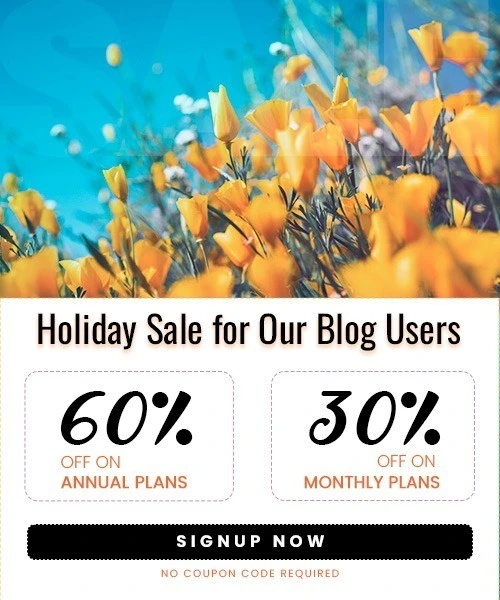How often Should You Post on Social Media? (2025)
Last Updated on August 27, 2025 by Himanshu Rawat
In the rapidly evolving digital world of today, finding the ideal posting rhythm is crucial. If you don’t post often enough, people might forget you exist. You run the risk of overwhelming your followers or weakening your message if you post too frequently.
Finding that sweet spot is more crucial than ever because of shifting algorithms and more discriminating audiences. This blog post will explore a data-driven guide on the ideal frequency of postings, supported by current trends, practical examples, and doable advice to help you stay current without tiring out your audience or yourself.
How Often Should You Post on Social Media? And Why Too Much Can Hurt Your Brand
Posting at the right frequency is key to keeping your audience engaged and growing online. Each platform has its sweet spot, like 3–5 posts per week on Instagram, 2–4 per day on Facebook, and X. Post too little, and you risk being forgotten; post too much, and you could lose followers or hurt your reach.
Why Posting Too Much Is Bad for Your Social Media
Posting too frequently on social media can harm your brand and engagement in several ways:
- Audience Fatigue: Constant posts overwhelm followers, leading them to ignore your content or unfollow you to reduce feed clutter.
- Lower Engagement: Algorithms favor content that gets genuine interaction. Overposting can dilute attention, causing fewer likes, comments, and shares per post, and may reduce your overall reach.
- Spam Perception and Brand Damage: Excessive posting can seem spammy or desperate, damaging your reputation and causing followers to report your content.
- Risk of Account Suspension: Automated or repetitive posting may trigger spam filters or violate platform rules, risking suspension or restrictions.
- Decline in Content Quality: Prioritizing quantity often leads to rushed, less valuable posts, missing chances for meaningful engagement.
- Social Consequences: Overposting can annoy your audience and strain relationships, potentially leading to social isolation if online time overtakes real-life interactions.
The secret is to strike a balance between posting frequently enough to remain relevant and not overburdening your audience.
Quick Snapshot: How Often to Post on Social Media in 2025
Here is a quick-reference table to plan consistent, high-performing content that fits each platform’s best practices.
Platform-by-Platform Posting Recommendations
1. Recommended Posting Frequency: on Instagram
For Instagram in 2025, the optimal posting frequency balances consistent visibility with high-quality content, avoiding follower fatigue or algorithm penalties.
Feed posts:
- Aim for 3 to 5 posts per week. This range is widely supported by data analyses showing higher engagement rates for brands and creators posting within this frequency, compared to posting more or less often.
- Brands posting 3–5 times weekly often see better engagement. Glossier follows this with 3-5 quality feed posts and daily Stories, striking a balance that keeps their audience engaged without overload.
Stories:
- Post at least 1 to 2 Stories daily. Stories are a lighter, ephemeral format that helps maintain daily engagement without overwhelming followers.
- Posting Stories daily keeps your account top-of-mind and signals activity to Instagram’s algorithm.
Reels:
- Incorporate 2 to 3 Reels per week. Reels are highly favored by Instagram’s algorithm and can boost reach and engagement significantly.
Best Times to Post:
- The best times to post Instagram Reels are between 9 AM–12 PM and 6 PM–7 PM on weekdays, and from 11 AM–2 PM on weekends for maximum engagement.
2. Recommended Posting Frequency: On Facebook
- To maintain visibility on your Facebook business page without overwhelming your audience, post 1 or 2 times a day. While more than twice a day may cause content fatigue, less than once a day can lower engagement.
- Many experts and platforms agree that 1-2 posts daily is the sweet spot for Facebook businesses to maintain a consistent presence and maximize reach.
- To sustain this posting rhythm effectively, plan a content calendar that mixes promotional content, company culture, industry news, and engaging visuals or videos.
- Facebook’s algorithm prefers regular, high-quality content over sheer volume. Posting once or twice a day keeps your page active without overwhelming your followers.
Best Times to Post on Facebook
- Research indicates that weekdays especially Wednesdays typically see the highest engagement rates. Tuesdays and Thursdays also show strong performance in terms of audience interaction.
- Best time is between 8 am to noon are peak engagement windows.
3. Recommended Posting Frequency: On X(Twitter)
- The general expert consensus is to post between 2 and 3 times per day on X (formerly Twitter) for businesses and individuals aiming to maintain visibility and engagement without overwhelming followers.
- Experts recommend posting 3–7 tweets daily including originals, replies, retweets, and thread to stay visible and expand reach.
Example: Wendy’s (@Wendys)
Wendy’s is known for tweeting multiple times a day, mixing witty original posts, timely replies, and retweets. This consistent, engaging presence has helped them build a strong, active following on X (formerly Twitter).
- The key is consistency: tweeting regularly every day keeps your profile active in the algorithm’s eyes and signals engagement to your audience.
Best time to post on Twitter: Overall best time to post on Twitter is Wednesday at 9 a.m., with mid-mornings on weekdays showing the most engagement.
4. Recommended Posting Frequency: On TikTok
- TikTok recommends posting 3–5 posts/week to maximize algorithm favor and audience reach.
- Many experts and data analyses suggest 1 to 3 posts daily as the ideal balance between growth and content quality for most creators and brands.
- Posting too frequently (more than 4 times daily) can lead to algorithm fatigue or content cannibalization, reducing overall reach.
Best days to post are Tuesday through Thursday, especially morning 5 am, afternoons between 2 p.m. and 5 p.m., with additional strong windows on Monday mornings and Saturday midday to evening.
5. Recommended Posting Frequency: On Pinterest
- Quality over Quantity: Pinterest emphasizes quality and relevance more than high frequency, as content has a long shelf life. Minimum Post at least 1 time per week.
- General Guideline: For most businesses, 3-5 times per week is a good starting point to maintain consistency without overwhelming your audience.
- Established Accounts: Aim for 5-10 posts per week to keep your audience engaged.
- Large Following/High Engagement: Consider 10-15 posts per week to keep content fresh.
- Daily Pins: Some sources suggest 1-5 pins per day, spaced out.

Best times to post on Pinterest are evenings around 8 PM on Sunday to Tuesday, plus daily peaks at 1-3 PM, Wednesday afternoons (2–4 PM), and mornings or evenings on other days.
6. Recommended Posting Frequency: On YouTube
- Beginners: Video Post 1-2 times per week to maintain consistency and focus on quality content.
- Growing/Established Channels: Aim for 3-5 videos per week to increase visibility and engagement steadily.
- High-traffic or Large Channels: Posting 5-7 times per week (even daily) can maximize growth, especially with a dedicated content team.
- Consistency is crucial; regular posting builds audience trust and signals activity to YouTube’s algorithm.
The best time to post on YouTube is on Friday from 3 to 4 p.m., with Thursday at 6 p.m. and Tuesday at 2 p.m. also performing well. These times generally work for both Shorts and regular videos.
5 Tips for Finding Your Ideal Posting Frequency
- Analyze Your Audience: Use platform insights to identify when your followers are most active and tailor your posting schedule accordingly.
- Prioritize Quality Over Quantity: Avoid posting just to fill a quota. High-quality, relevant content drives better engagement and long-term growth.
- Be Consistent: Consistency is crucial, Regular posting signals to algorithms that your account is active and valuable, improving organic reach.
To stay consistent without burning out, consider using scheduling tools like Outfy, Buffer , Later, or Hootsuite . These platforms allow you to plan and automate your posts in advance, ensuring a steady content flow even during busy periods. - Monitor Performance: Track engagement metrics and adjust frequency based on what resonates with your audience
- Avoid Burnout: Sustainable posting schedules prevent creator fatigue and maintain creativity
Conclusion: Determine the ideal posting rhythm.
Regarding the frequency of social media posts, there is no one-size-fits-all strategy. Your platform, audience, content quality, and objectives will all affect the optimal timetable. It usually works best to have a regular, well-balanced posting schedule with excellent content catered to your audience.
For long-term growth, start with platform-specific rules, such as posting three to four times a week on Instagram or one to four times per day on TikTok, and modify in response to your analytics.
Frequently Asked Questions
1. How often should I post on Instagram in 2025?
You should aim to post 3–5 times a week to your feed and share 1–2 stories per day for best engagement. Use Reels to boost reach and discoverability.
2. Is it bad to post too much on social media?
Yes, overposting can lead to lower engagement and follower fatigue. It’s better to post high-quality content less frequently than to flood your feed with low-effort posts.
3. How often should a small business post on social media?
Small businesses should post 3–7 times per week across their top platforms, focusing on value-driven content that builds brand awareness and drives interaction.
4. Do I need to post every day?
Not necessarily. Daily posting helps with consistency, but isn’t mandatory. Focus more on regular posting + engagement, even if it’s 3–4 times per week.
5. How can I keep up with posting regularly?
Use tools like Outfy, Buffer, Hootsuite, or Later to schedule posts in advance and manage your content calendar more efficiently.



